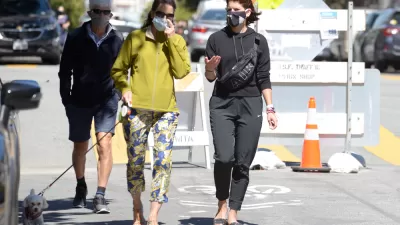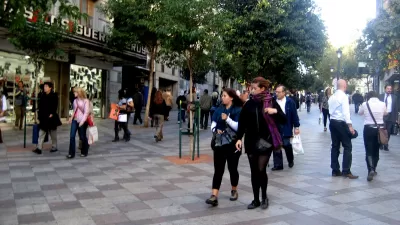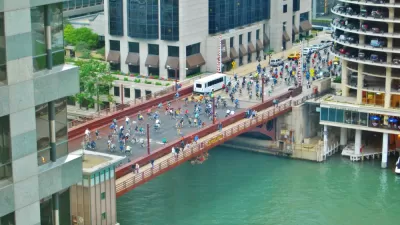Historical reports from the Regional Plan Association show that car-free streets is an idea almost as old as automobiles themselves.

A brief history of the Regional Plan Association’s research into road design and open streets highlights the deep roots of challenges cities still face today. Sidney Essex writes, “Recently, we unearthed from the RPA archives a New York Times article from 1928 that summarized a recommendation from the Regional Plan of New York and its Environs - also known as the First Regional Plan — about the inequity of pedestrian-free highways without parallel automobile-free urban streets.”
Almost a century later, advocates for open streets, including RPA, are making similar arguments. In 1928, RPA touted the economic benefits of open streets, pointing to the lower cost of building car-free streets. In their 2021 report, Re-Envisioning the Right of Way, they returned to economic benefits in a new way. “The research instead explored the potential of considering our shared streetscapes to be part of an integrated natural, transportation, and social system that can support local economies and food production.”
In 1928, RPA warned that giving up parts of residential streets to light industry leads to the loss of usable public space for pedestrians. “In 2021, RPA attempted to navigate this old tension between commerce and pedestrians by holding a symposium on the impacts and opportunities of e‑commerce in the region, which brought leading thinkers in the fields of supply chain management, transportation, land use, public finance, and waste management together to envision a region in which commerce is convenient, safe for pedestrians, and sustainable.”
FULL STORY: Open Streets Are an Old Idea Whose Time Has Come

Alabama: Trump Terminates Settlements for Black Communities Harmed By Raw Sewage
Trump deemed the landmark civil rights agreement “illegal DEI and environmental justice policy.”

Planetizen Federal Action Tracker
A weekly monitor of how Trump’s orders and actions are impacting planners and planning in America.

Why Should We Subsidize Public Transportation?
Many public transit agencies face financial stress due to rising costs, declining fare revenue, and declining subsidies. Transit advocates must provide a strong business case for increasing public transit funding.

Understanding Road Diets
An explainer from Momentum highlights the advantages of reducing vehicle lanes in favor of more bike, transit, and pedestrian infrastructure.

New California Law Regulates Warehouse Pollution
A new law tightens building and emissions regulations for large distribution warehouses to mitigate air pollution and traffic in surrounding communities.

Phoenix Announces Opening Date for Light Rail Extension
The South Central extension will connect South Phoenix to downtown and other major hubs starting on June 7.
Urban Design for Planners 1: Software Tools
This six-course series explores essential urban design concepts using open source software and equips planners with the tools they need to participate fully in the urban design process.
Planning for Universal Design
Learn the tools for implementing Universal Design in planning regulations.
Caltrans
Smith Gee Studio
Institute for Housing and Urban Development Studies (IHS)
City of Grandview
Harvard GSD Executive Education
Toledo-Lucas County Plan Commissions
Salt Lake City
NYU Wagner Graduate School of Public Service





























